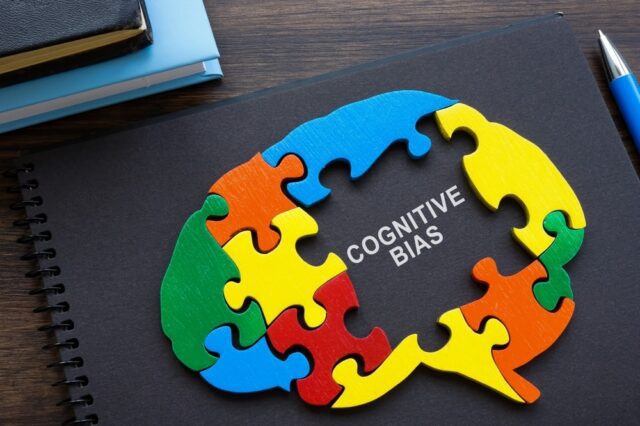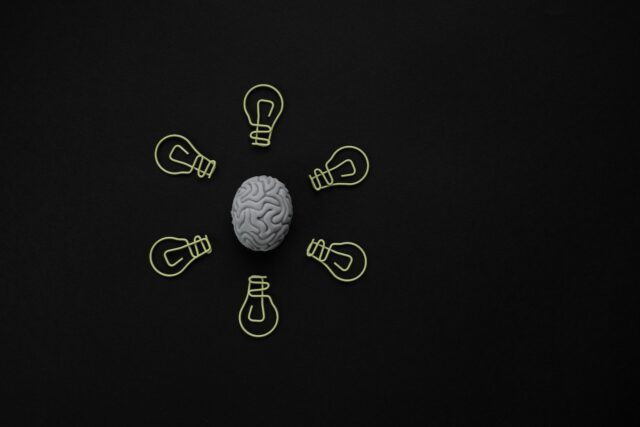Every school day brings moments of tension: two students argue during group work, a child refuses to share, or a misunderstanding escalates into a bigger problem. These are not signs of failure. They are opportunities. When educators treat conflict as something that can be taught and practiced, it becomes a tool for growth.
Helping students manage disagreements is not just about keeping the classroom quiet. It can shape how young people relate to themselves and others. Students learn how to listen with care, express their emotions clearly, and build positive relationships even when things get tough.
These same ideas apply well beyond the classroom. Whether you are leading a school, teaching in it, or working within a larger organization, conflict resolution lays the groundwork for stronger communication and more resilient teams.
In this guide, we take a closer look at the mindset behind teaching kids how to resolve conflicts, the long-term impact it has on student and staff culture, and the methods we use at Pollack Peacebuilding to help educators bring this work to life.
The Fundamental Principles Behind Teaching Conflict Resolution
Even the best classrooms experience tension. A disagreement over whose turn it is, a raised voice, or a hurtful comment are all learning moments if we treat them as such. Teaching conflict resolution skills can help students understand that disagreement does not mean danger. It means an opportunity to grow.
What Is Conflict and Conflict Resolution?
Conflict occurs when two or more people have opposing goals, needs, or interpretations. It might look like two students arguing over shared materials or a group project falling apart due to clashing personalities. While the triggers vary, the underlying cause is usually simple: unmet needs or miscommunication.
There are two kinds of conflict, and the difference matters.
- Constructive conflict opens the door to problem-solving, builds stronger trust, and supports positive relationships. It challenges people to listen, reflect, and grow.
- Destructive conflict, on the other hand, erodes trust. It triggers emotional responses like blame, withdrawal, or outbursts, making it harder for people to connect or move forward.
What makes the difference is not whether conflict arises but how people respond when it does. That is why conflict resolution skills are so important and teachable.
These include active listening, empathy, and using ‘I’ statements to express concerns without making accusations. Students also learn how to handle disagreements in a healthy way, especially when emotions are high.
These distinctions are essential to understanding the full definition of conflict resolution: what it means, how it functions, and why it matters in everyday situations.
Why Emotional Regulation Comes First
Before students can solve problems with others, they need to understand what is happening inside themselves. Recognizing big feelings like anger, sadness, or frustration is the first step.
Tools like emotion thermometers, feelings charts, and stoplight visuals become especially useful. These visuals prompt students to check in and label what they feel instead of reacting automatically.
When a student can say, “I feel sad because I was left out,” they are better positioned to express that using ‘I’ messages and engage in peaceful problem-solving. This ability to pause and reflect can lower the temperature in even the most emotionally charged moments.
Many educators use the SOAR method when teaching kids how to practice self-regulation in real time:
- Stop: Take deep breaths to regain calm
- Observe: Notice what just happened around you
- Assess: Think about your options
- React: Choose a healthy way to move forward
Practicing SOAR during role plays or group discussions gives students real-time experience applying this approach. Over time, with steady modeling from adults, even younger students start to recognize what it feels like to pause and name their reactions.
Common Types of Conflict in Learning Environments
Student conflict does not follow one pattern. Based on the framework by Johnson and Johnson, conflict in school settings tends to fall into four main categories:
- Intrapersonal conflict: The student wrestles with personal values, self-esteem, or internal uncertainty.
- Interpersonal conflict: Tension between two individuals. This might include teasing, exclusion, or misunderstandings.
- Intragroup conflict: Disagreements within a group, such as clashing over shared responsibilities or uneven workload.
- Intergroup conflict: Issues between groups, such as social cliques, rivalries, or unspoken divisions.
You might recognize these in the day-to-day:
- Two students repeatedly interrupting each other during a group presentation
- One student refusing to partner with a peer due to a past disagreement
- A project group falling apart because no one steps up to lead, leaving frustration to simmer
These are real-world conflict resolution scenarios where emotion runs high and instinct can take over. But with the right guidance, students can learn to slow down, check in with their own emotions, and respond rather than react.
When teachers are able to identify these patterns, they can step in to help students work through them. That might mean inviting them to brainstorm solutions, encouraging reflective listening, or simply asking an open-ended question that shifts perspective. These moments are small but powerful. They teach students how to face challenging situations with clarity and self-awareness.
And as this becomes the norm, the classroom changes. It turns into a place where two students can disagree without damaging their connection and where another student might quietly model empathy in the background.

Benefits of Conflict Resolution Education in Workplaces and Educational Institutions
Teaching conflict resolution does more than smooth over a tense classroom or ease office tension. It creates long-term value. In both schools and workplaces, these strategies support a stronger culture, personal growth, and sustainable engagement.
Below are some of the key advantages, each one backed by research, practice, and everyday observation.
Improved Student Behavior and Classroom Climate
When educators prioritize teaching conflict resolution skills, classroom dynamics shift. Students become less reactive and more reflective.
They know what ‘I’ statements are and how to use them. They recognize others’ feelings without being told. Instead of jumping to conclusions or making accusations, they ask open-ended questions to understand the other student’s perspective.
This proactive approach lowers the frequency and intensity of classroom conflict. Teachers are no longer expected to play the role of referee. Instead, they guide students through resolution in real time, often using role-playing or peer mediation to reinforce norms. The result includes fewer disruptions and a more respectful atmosphere where students feel seen, heard, and safe.
These gains are especially pronounced in elementary school environments where younger students still rely on adult modeling. But even in middle school, students benefit when taught how to handle disagreements early and often.
Stronger Social-Emotional Learning (SEL) Outcomes
Conflict resolution is not separate from SEL; it is the practical application of it. When students learn the art of resolving conflicts, they simultaneously build communication skills, emotional literacy, and empathy.
Conflict management skills reinforced through role-playing, visual prompts, and direct coaching in the moment.
Whether a student is learning to take deep breaths when frustrated or practicing reflective listening during a disagreement, they are internalizing lessons that impact every relationship they will ever have.
Conflict resolution skills extend far beyond the classroom. They shape how students view themselves, others, and the world.
Greater Readiness for the Workforce
Teaching conflict strategies is career preparation. Conflict resolution skills that employers value, such as effective communication and collaboration, are directly nurtured through conflict resolution training.
When students learn how to give feedback, negotiate with peers, or listen without interrupting, they are doing more than resolving conflicts. They are preparing for adult life.
These same abilities translate into more confident presentations, stronger teamwork, and leadership potential. In short, when educators invest in teaching kids to manage tension, they are equipping them for the world.
Many of these lessons mirror the different types of training we deliver to professionals. That alignment helps create smoother transitions from school to work, especially in collaborative industries.
Reduced Organizational Tension and Turnover
In school settings, unresolved conflict drains morale. Whether it is miscommunication between colleagues, friction during team planning, or tension among leadership, the emotional toll adds up. Conflict resolution strategies give educators the tools to address issues early before they disrupt collaboration or lead to burnout.
Peer-level interventions, where teachers or staff members are trained in resolving conflicts, lighten the load on administrators and model healthy conflict engagement.
When teachers feel heard, respected, and supported, the culture shifts. Turnover drops, motivation rises, and the focus returns to what matters: how to empower students.
These long-term gains are among the most well-documented benefits of conflict training, especially in environments with high stress or rapid growth.
Long-Term Leadership Development
Students who learn how to navigate conflicts become better leaders. That is because the same skills, including self-awareness, emotional intelligence, fairness, and ethics, are foundational to leadership.
When a peer mediator in 5th grade learns to stay calm under pressure, they are developing problem-solving skills and self-control. When a high schooler facilitates a difficult group conversation, they are building the confidence and clarity they will need later in life.
Teaching conflict in early life allows students to practice the same ethical reasoning and perspective-taking that will guide them in adulthood. These are the future mentors, managers, and changemakers. And it all starts with knowing how to pause, listen, and speak with intention.

Strategies We Use at Pollack Peacebuilding to Train People in Conflict Resolution
At Pollack Peacebuilding, we do more than offer tips. We help people change how they experience conflict. Our methods are rooted in real-world practice, psychology, and results. Below are a few of the core conflict resolution strategies we use to teach children, businesses, and community organizations.
Our Transformational Approach
Most conflict resolution training focuses on surface-level strategies: what to say, how to react, and when to intervene. We go deeper. We help teams recognize the patterns behind the tension.
Our work addresses:
- Communication breakdowns and challenging situations
- Cultural or identity-based misunderstandings
- Structural friction from unclear roles or power imbalances
We tailor every solution. Whether we are working with a school district, a nonprofit, or a Fortune 500 company, our training meets people where they are and then moves them forward.
Our Signature Peacemaking Program
This three-part system works across ages, industries, and settings:
1. One-on-One Interviews
- Private coaching that surfaces unspoken concerns
- Builds trust and emotional readiness
- Helps individuals clarify their own emotions
2. Facilitated Dialogue
- Guided conversations that center on effective communication
- Reframes conflict as an opportunity for problem-solving
- Builds agreements and shared accountability
3. Follow-Up Coaching
- Long-term check-ins that promote behavioral change
- Reinforces self-regulation and de-escalation
- Repairs trust that was fractured by previous interactions
Our conflict resolution workshops use this model to guide groups through meaningful transformation, moving beyond surface-level management toward lasting change.
Mediation & Informal Conflict Coaching
We also offer individualized support through informal coaching, especially helpful for:
- Teachers navigating student conflict
- HR professionals managing team stress
- Department leads handling daily tension
Through a relational lens, we teach how to:
- Spot early warning signs
- Intervene without escalating
- Model calm, compassionate leadership
This style of work reinforces safe space dynamics and weaves trust into the daily culture rather than reserving it for moments of crisis. These methods reflect the core principles of informal conflict resolution, where trust is built through quiet consistency rather than formal intervention.
Let Us Help You Empower Conflict Competence in Every Setting
Teaching conflict resolution changes how people think, not just how they act. From a preschool circle time to a corporate town hall, the ability to engage with conflict productively determines the strength of your culture.
At Pollack Peacebuilding Systems, we help organizations and schools integrate this work deeply, honestly, and effectively. Whether you need one-on-one conflict coaching, group training, or ongoing implementation support, we are here to help. Our mission is to turn tension into trust and disputes into dialogue. Reach out to us today to schedule a customized workshop or consultation that fits your community’s needs.



